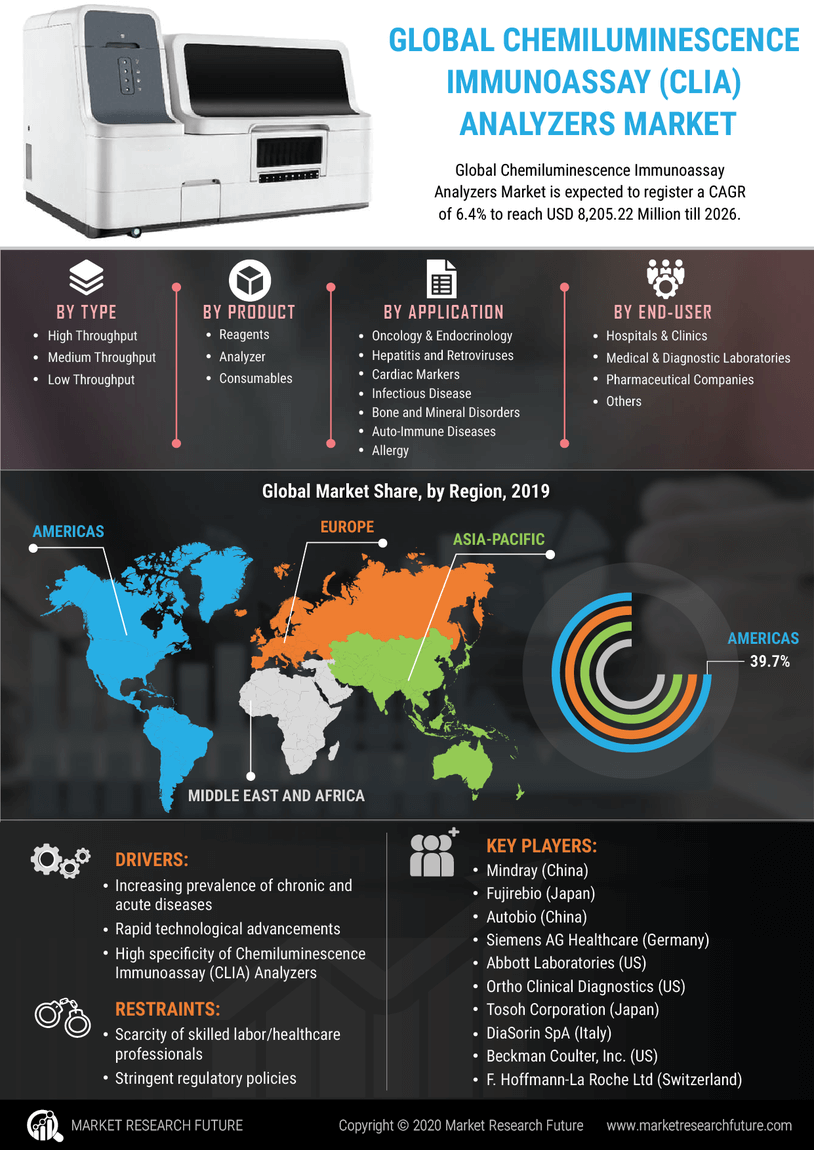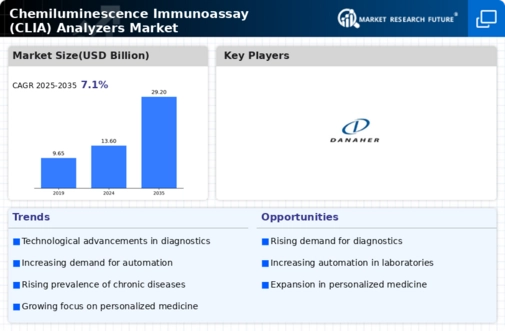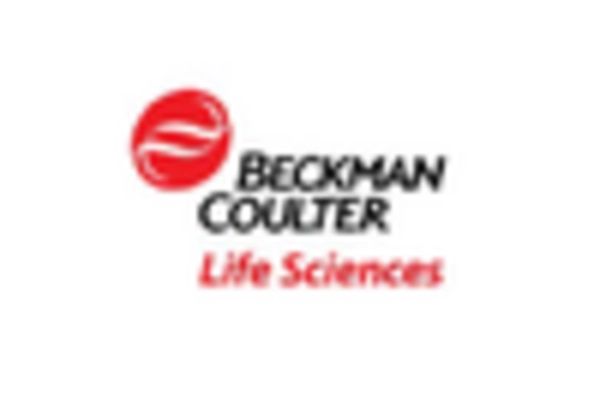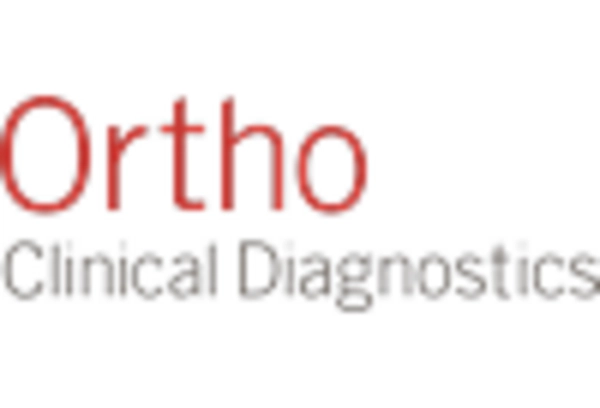Rising Prevalence of Chronic Diseases
The Chemiluminescence Immunoassay (CLIA) Analyzers Market is significantly influenced by the rising prevalence of chronic diseases such as diabetes, cardiovascular disorders, and infectious diseases. As these conditions become more widespread, the demand for accurate and timely diagnostic tools increases. CLIA analyzers play a pivotal role in the early detection and monitoring of these diseases, thereby facilitating better patient management. According to recent data, the incidence of diabetes alone is expected to reach over 700 million cases by 2045, which underscores the urgent need for effective diagnostic solutions. This trend is likely to propel the growth of the CLIA analyzers market as healthcare providers seek reliable testing methods to address the growing burden of chronic diseases.
Regulatory Support and Standardization
The Chemiluminescence Immunoassay (CLIA) Analyzers Market is positively impacted by regulatory support and standardization efforts aimed at improving diagnostic accuracy and reliability. Regulatory bodies are increasingly establishing guidelines and standards for the use of CLIA analyzers, which enhances their credibility and encourages adoption among healthcare providers. This regulatory framework is essential for ensuring that diagnostic tests meet stringent quality requirements, thereby fostering trust in the results obtained from CLIA analyzers. As a result, manufacturers are likely to invest in compliance with these regulations, which could lead to innovations and improvements in product offerings. The ongoing support from regulatory agencies is expected to drive market growth by promoting the use of standardized and reliable diagnostic solutions.
Increased Focus on Preventive Healthcare
The Chemiluminescence Immunoassay (CLIA) Analyzers Market is benefiting from a heightened focus on preventive healthcare measures. As healthcare systems shift towards proactive management of health, the demand for diagnostic tools that enable early disease detection is surging. CLIA analyzers are integral to this shift, providing rapid and accurate results that facilitate timely interventions. The market is expected to expand as more healthcare providers adopt these technologies to enhance patient outcomes. Furthermore, government initiatives promoting preventive healthcare are likely to drive investments in diagnostic technologies, further bolstering the CLIA analyzers market. This trend indicates a growing recognition of the importance of early diagnosis in improving overall health and reducing healthcare costs.
Growing Demand for Home Healthcare Solutions
The Chemiluminescence Immunoassay (CLIA) Analyzers Market is witnessing a growing demand for home healthcare solutions, driven by the increasing preference for at-home testing. Patients are increasingly seeking convenient and accessible diagnostic options that allow them to monitor their health from the comfort of their homes. CLIA analyzers that are designed for point-of-care testing are particularly well-suited for this trend, as they provide rapid results and ease of use. The market for home healthcare is projected to expand significantly, with estimates indicating a growth rate of over 10% in the next few years. This shift towards home-based testing is likely to create new opportunities for manufacturers of CLIA analyzers, as they adapt their products to meet the needs of this emerging market.
Technological Advancements in CLIA Analyzers
The Chemiluminescence Immunoassay (CLIA) Analyzers Market is experiencing rapid technological advancements that enhance the accuracy and efficiency of diagnostic testing. Innovations such as automated systems and integration with artificial intelligence are streamlining workflows and reducing human error. These advancements are likely to improve the sensitivity and specificity of tests, which is crucial for accurate disease diagnosis. The market for CLIA analyzers is projected to grow significantly, with estimates suggesting a compound annual growth rate of over 8% in the coming years. This growth is driven by the increasing adoption of advanced technologies in laboratories and healthcare facilities, which are essential for meeting the rising demand for reliable diagnostic solutions.


















Leave a Comment